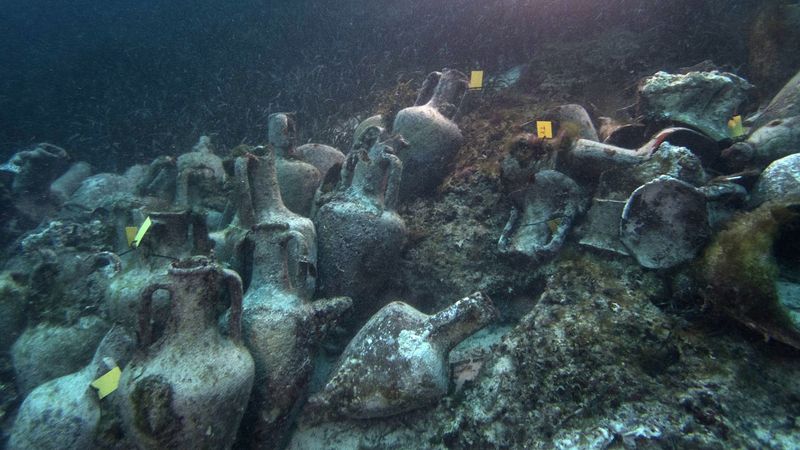HOT NEWS !
Stay informed on the old and most recent significant or spectacular
nautical news and shipwreck discoveries

-
829-year-old 'Viking-style' shipwreck reveals its secrets
- On 18/04/2019
- In Underwater Archeology
- 0 comments
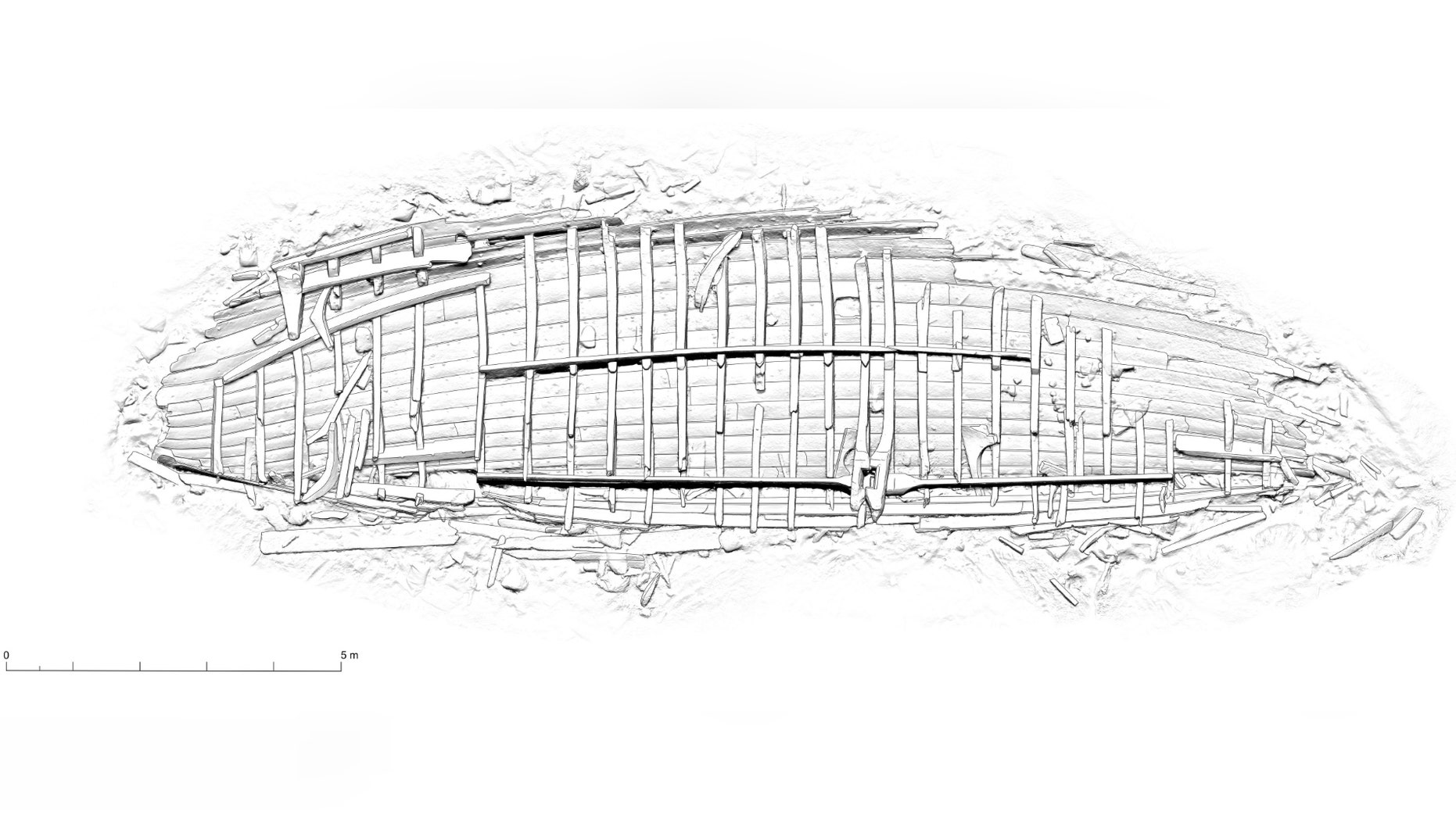
By James Rogers - Fox News
The wreck of a 12th-century ‘Viking-style’ ship discovered in a German port is revealing its secrets thanks to high-tech 3D-scanning technology.
The shipwreck was found in just 10 feet of water when workers were extending the Baltic Sea port of Wismar. Thanks to the seawater and harbor silt, the ship’s timbers are perfectly preserved, according to archaeologists.
Measuring almost 80 feet by 13 feet, the ship’s remains have been dated to around 1188. Experts used 3D scanner technology to reveal that the open-decked ship was constructed entirely with axes and adzes.
Analysis of the ship’s timbers revealed that they were from Western Sweden. Maritime Archaeologist Dr. Jens Auer, who led the project, described the ship as a descendant of Viking vessels. “It was a heavy, load-bearing cargo ship, of Nordic design, built with great care and durability…with overlapping pine planks, clinker-style, with a beautiful curved construction…made during a relatively peaceful period of time," he explained, in a statement.
The ship likely carried cargoes such as timber, stones, or even beer, Auer added.
Experts estimate that the ship had a crew of 8 to 12 men.
-
Ancient shipwreck to become underwater museum for divers
- On 10/04/2019
- In Museum News
- 0 comments
From Associated Press
Near the northern Greek island of Alonissos lies a remarkable ancient shipwreck: the remains of a massive cargo ship that changed archaeologists' understanding of shipbuilding in antiquity.
Now this spectacular find is to become the first ancient shipwreck to be made accessible to the public in Greece, including to recreational divers. Greece's rich underwater heritage has long been hidden from view, off-limits to all but a select few, mainly archaeologists.
Scuba diving was banned throughout the country except in a few specific locations until 2005, for fear that divers might loot the countless antiquities that still lie scattered on the country's seabed. Ancient shipwrecks and even many more recent ones are still off-limits.
Now that seems to be gradually changing, with a new project to create underwater museums. Divers will be able to tour certain shipwrecks and non-divers will experience the sites through virtual reality in information centers on land.
The first of these sites is the Peristera shipwreck, named for the uninhabited Greek island opposite Alonissos where it was discovered in the early 1990s.
The cargo ship was laden with thousands of amphoras, or vases, probably containing wine, when it sank in the late 5th century B.C. All that survives is the cargo, the exposed parts of the wooden ship having long since rotted away.
But the sight is spectacular. Thousands of ancient vases, the vast majority intact, lie in layers. Fish, sponges and other sea creatures have made the amphoras their home, adding color and life to the site. In some places, the cargo towers above divers as they pass along the perimeter of the wreck.
-
Dutch sea search stumbles on 'oldest' shipwreck
- On 04/04/2019
- In Underwater Archeology
- 0 comments
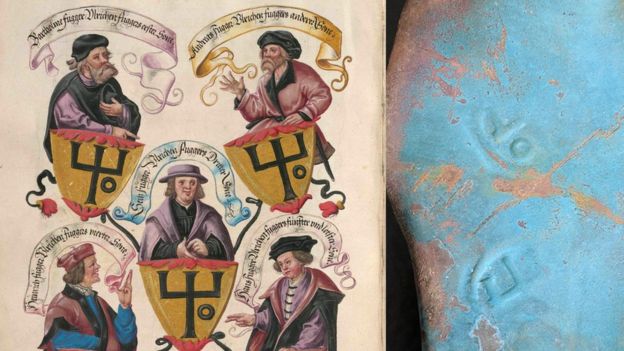
From BBC News
It is being hailed as a lucky accident, after salvage teams searching for containers that fell off a ship in a storm discovered a 16th Century shipwreck on the North Sea floor.The ship, dating back to 1540, was filled with a cargo of copper plates and some of them were put on display on Wednesday when the find was revealed. It was owned by the Fugger family, one of Europe's richest banking families.
The wreck is being described as "the missing link" in shipping construction. "It's the way the ship was built that's very interesting because you have to think 100 years later the Netherlands was in the middle of its Golden Age - and this ship is from a transition period," maritime archaeologist Martijn Manders told the BBC.
Although it is still on the seabed, divers intend to revisit the ship during the summer. It is considered to be the oldest seafaring ship ever found in Dutch waters.
When 345 containers fell from merchant ship MSC Zoe into the North Sea during a storm on 2 January, some spilled on to land in the next days, but many more remained in the sea.
As salvage teams scoured the Dutch North Sea, their sonar equipment found an unknown object on the seabed a few miles to the north of the island of Terschelling in the Wadden Sea.
-
‘Titanic II’ to be a near-replica of the original
- On 01/04/2019
- In Famous Wrecks
- 0 comments
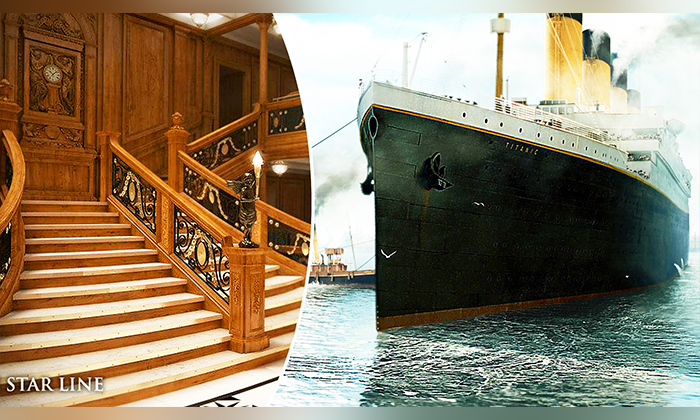
By Cat Bolton - The Epoch Times
One of the world’s most famous large-scale disasters was the maiden voyage of the British passenger liner RMS Titanic, which sank to the bottom of the Atlantic Ocean in a shipwreck that killed more than 1,500 passengers and crew.Nearly every student and film enthusiast has either heard the story or seen the movie, making the deadly nautical disaster both one of the biggest peacetime tragedies of the 20th century and one of the most famous.
It would stand to reason that, with the grim history behind the massive liner and its name, few would dare board a replica a century later. But thrill seekers everywhere will potentially get that chance within the next five years—and even for the most superstitious among us, it’s a pretty tempting-looking adventure.
Australian billionaire and cruise line chairman Clive Palmer is the brainchild behind the “Titanic II,” which is currently projected to set sail from Dubai some time in 2021.
She’ll arrive at Southampton in time for a 2022 maiden voyage, exactly 110 years after the first Titanic went to cross the ocean, and the ship will be a near-identical replica to the original Titanic, with a capacity of 2,500 passengers who will get to experience a cruise experience just as the original passengers had hoped to.
In an almost eerie parallel to the original ship, the project has hit a handful of obstacles since first being announced in 2012. Financial disputes with the Chinese manufacturers working to build the ship left the project seemingly dead in the water, crushing a controversial yet exciting-sounding dream hatched in the era of limit-pushing and past-era nostalgia.
-
WWII aircraft carrier USS Wasp discovered in the Coral Sea
- On 18/03/2019
- In World War Wrecks
- 0 comments
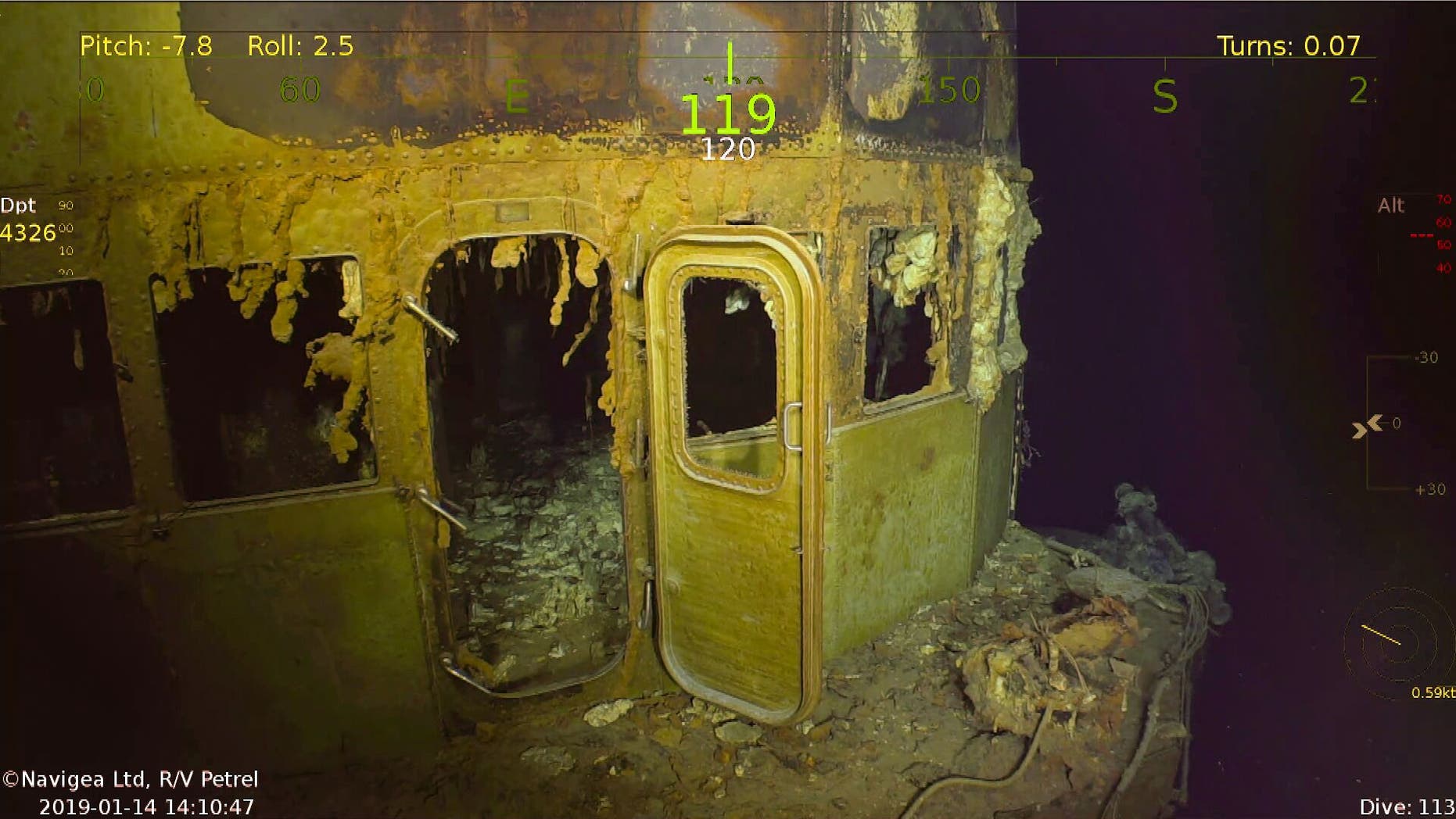
By James Rogers - Fox News
The wreck of World War II aircraft carrier USS Wasp has been discovered in the Coral Sea more than 70 years after the ship was sunk during the Guadalcanal campaign.Wasp was spotted on the seabed by experts from the vessel RV Petrel, which is part of a research organization set up by the late billionaire Paul Allen.
The carrier was escorting Marine reinforcements to Guadalcanal when she was hit by four torpedoes fired by the Japanese submarine I-19 on Sept. 15, 1942. Of the ship’s 2,162-strong crew, 176 were killed in the attack.
Unable to battle the fires that raged on the carrier, Wasp’s crew were forced to abandon the ship. Drifting and aflame, the vessel was scuttled by U.S. forces.
In a statement, Allen’s Vulcan organization notes that, although the torpedoes caused a massive inferno, Wasp’s crew were reluctant to leave the ship until all their crewmates were safe.
The storied ship, which was the first to launch U.S. Army planes from a U.S. Navy carrier, was also deployed to Iceland in 1941 and to the besieged Mediterranean island of Malta in April and May 1942.
-
Yeast from 1886 shipwreck makes new brew
- On 18/03/2019
- In Treasure Hunting / Recoveries
- 0 comments

From The Detroit News
The most distinguishing feature of Jamie Adams’ new ale isn’t its hoppy bite but its compelling backstory – brewed from yeast in bottles of beer that went down on a doomed steamship and languished on the ocean floor for 131 years.
Some who lined up to sample a swig of the new Deep Ascent ale at a craft beer festival last weekend say it provided a refreshing taste of another era.
“Just the concept that they could bring a beer bottle up from the bottom of the ocean … then be able to extract the yeast from it, that kind of chemistry is fascinating,” says beer enthusiast Peter Bowe of Schenectady. “And the beer is absolutely fantastic.”
Adams, a former Wall Street trader who opened Saint James Brewery in Long Island nearly two decades ago, says his beer grew out of his love of scuba diving. It was brewed with yeast extracted from bottles he and fellow divers salvaged from the SS Oregon, a luxury liner from Liverpool to New York that collided with a schooner and sank off Fire Island in 1886.
It lies 135 feet deep in an underwater cemetery known to local divers as Wreck Valley.
“It’s a wonderful, wonderful shipwreck to dive,” says Adams, 44, “I came up with the idea to make some beer if we came up with some intact bottles.”
He enlisted a team of divers in 2015 to search for bottles but didn’t hit pay dirt until 2017, after storms shifted sands and made the first-class dining room accessible. They dug down 15 feet in the sea bed to gain access, and then another six feet inside the ship to find a half-dozen bottles upside-down, corks intact. Later dives found 20 more bottles.
-
Archaeology Nile shipwreck discovery proves Herodotus right
- On 17/03/2019
- In Underwater Archeology
- 0 comments
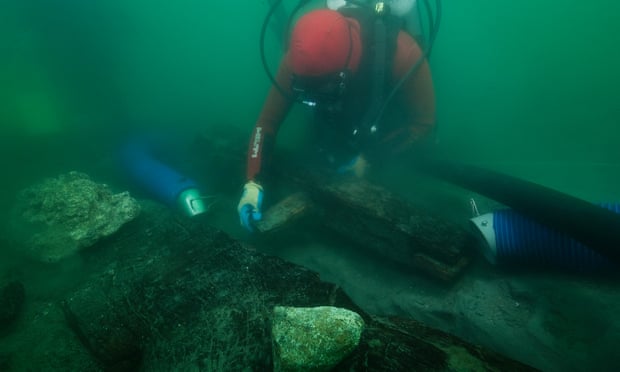
By Dalya Alberge - The Guardian
In the fifth century BC, the Greek historian Herodotus visited Egypt and wrote of unusual river boats on the Nile. Twenty-three lines of his Historia, the ancient world’s first great narrative history, are devoted to the intricate description of the construction of a “baris”.For centuries, scholars have argued over his account because there was no archaeological evidence that such ships ever existed.
Now there is. A “fabulously preserved” wreck in the waters around the sunken port city of Thonis-Heracleion has revealed just how accurate the historian was.
“It wasn’t until we discovered this wreck that we realised Herodotus was right,” said Dr Damian Robinson, director of Oxford University’s centre for maritime archaeology, which is publishing the excavation’s findings.
“What Herodotus described was what we were looking at.” In 450 BC Herodotus witnessed the construction of a baris. He noted how the builders “cut planks two cubits long [around 100cm] and arrange them like bricks”.
He added: “On the strong and long tenons [pieces of wood] they insert two-cubit planks. When they have built their ship in this way, they stretch beams over them… They obturate the seams from within with papyrus.
There is one rudder, passing through a hole in the keel. The mast is of acacia and the sails of papyrus...”
-
Mystery anchor found on the seabed in Cornwall
- On 03/03/2019
- In Treasure Hunting / Recoveries
- 0 comments

By Shannon Hards - Cornwall Live
An huge old anchor trawled in Cornwall may be from one of the most valuable shipwrecks in history.The Merchant Royal, a 17th-century English merchant ship, was lost at sea off Land's End in September 1641. It is believed that the ship sank carrying gold, silver and bullion worth hundreds of millions - if not billions - in today’s prices.
The giant anchor was trawled by the fishing vessel Spirited Lady earlier this week, and is estimated to date back to a period between 1600-1800.
The anchor's size and age have led some to speculate that it may have once belonged to the Merchant Royal. The ship was rumoured to be the wreck found by the US company Odyssey Marine Exploration in 2007 and known only by the codename Black Swan.
But after lengthy legal wranglings, Odyssey was ordered to hand over coins recovered from the wreck to Spain, suggesting that the ship was really a Spanish frigate. The case became notorious when it popped up in leaked US diplomatic cables released by the WikiLeaks website.
Still, as far as we know, the Merchant Royal – nicknamed “the El Dorado of the seas” – is yet to be discovered.
